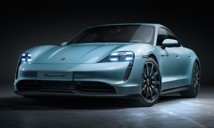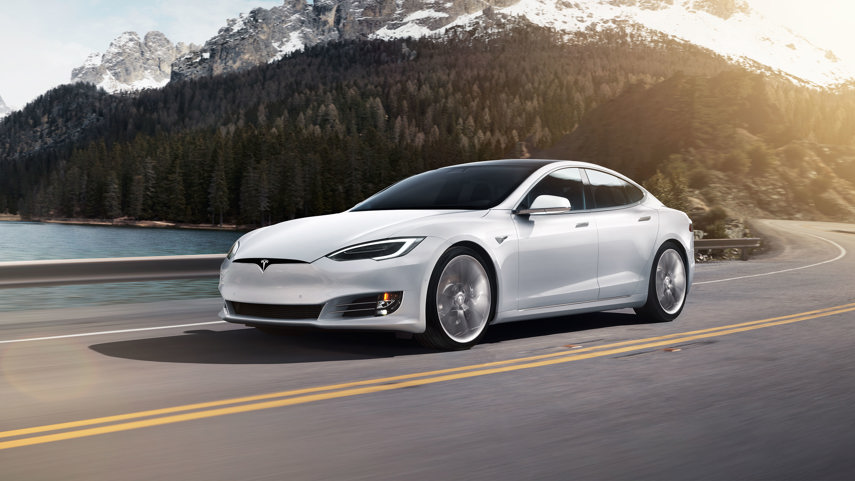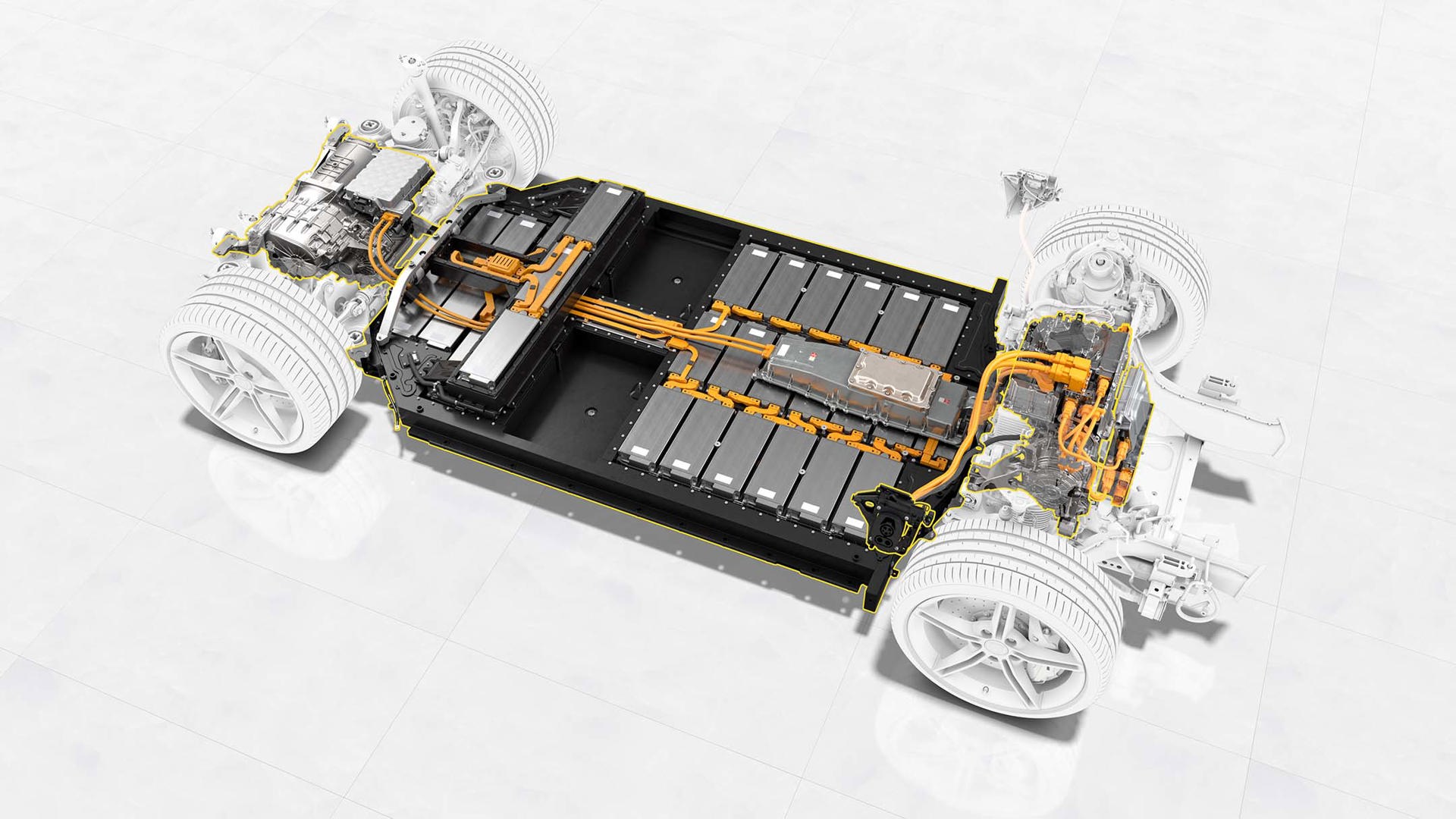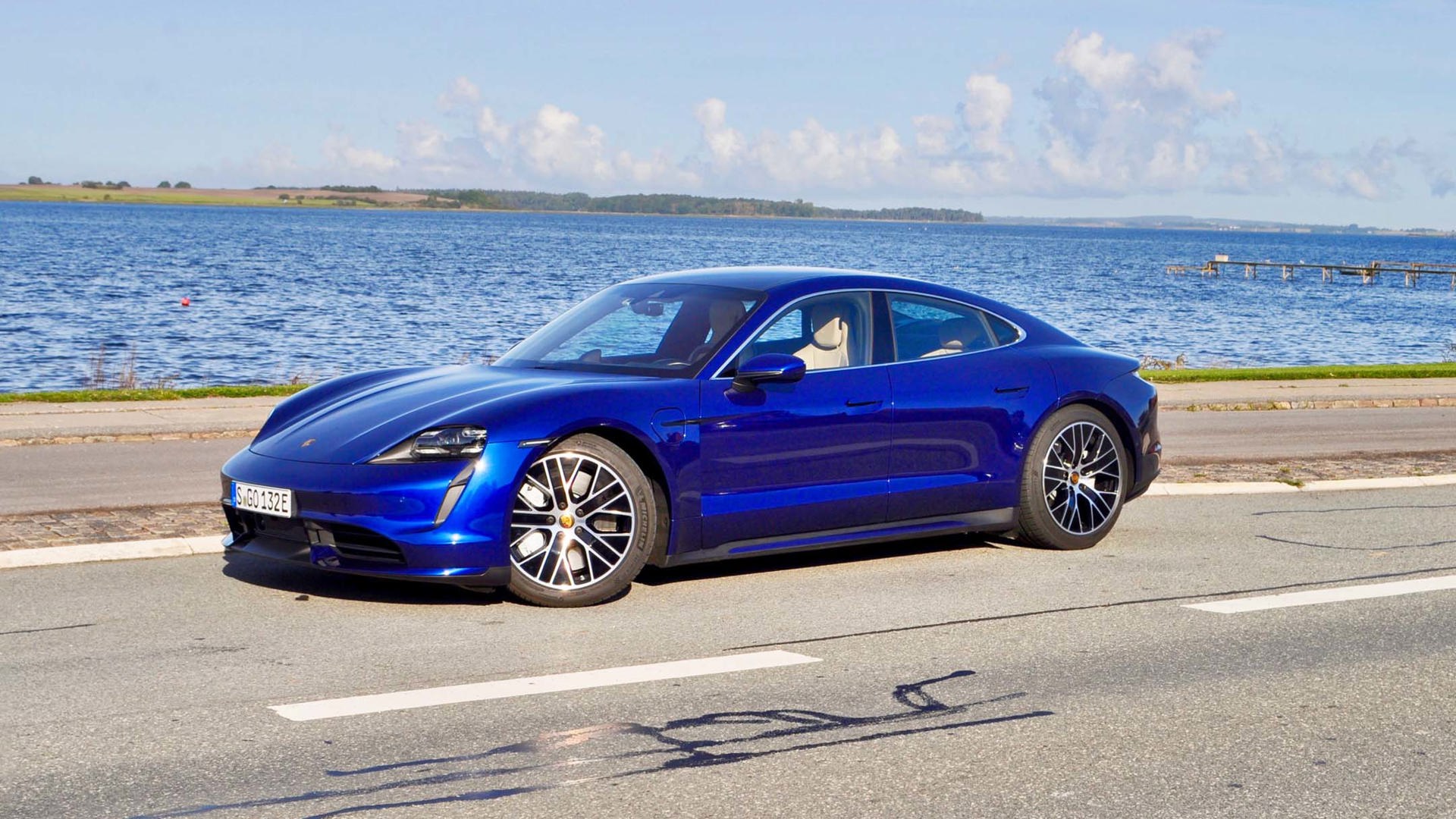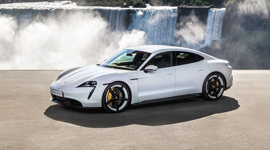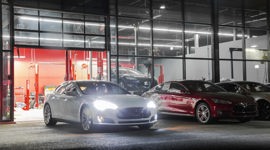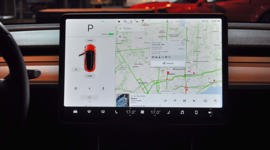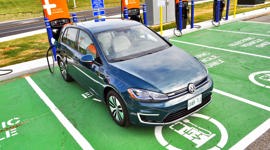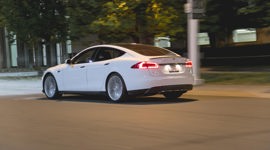Porsche showed off its all-new Taycan 4S sedan at the 2019 LA Auto Show to much fanfare, but little surprise – the company released pricing and performance specs back in October. That’s not to say it isn’t a significant launch – Porsche’s newest version of its ground-breaking Taycan EV is clearly the closest in price yet to that of its one true market nemesis: the Tesla Model S.
Having driven earlier versions of the Model S and the Taycan’s pricier Turbo editions (look for our driving impressions of the 4S in December), here’s how a quick look at the numbers and specs break down.
Price: Advantage Tesla
Though Tesla pricing has a tendency to drift, the starting price of the Model S ($109,090 for 2020) has stayed consistently below the Porsche ($119,400) – by a considerable margin. Even if Model S pricing increases by the time the Taycan 4S hits the market next summer, chances are it won’t close the $10K gap that currently separates the two cars.
One important factor to keep in mind: Porsche has yet to introduce a rear-wheel-drive version of the Taycan, which could match or even undercut a base Model S. That would appeal to some rear-drive enthusiasts, since the Model S no longer offers such an option.
Range: Advantage Tesla
Though the official – and more realistic – EPA range numbers are not yet available for the Porsche Taycan 4S, its optimistic WLTP rating of 407 km (463 km for the up-level Battery Plus model) is still well behind the Tesla Model S, which boasts longer rated range, even by the more-stringent EPA standard.
The base Model S (Long Range) offers a market-leading 600 km, or a slightly lower 560 km for the quicker Performance version. And these are EPA numbers, which are typically identical to Natural Resources Canada figures, unlike fuel consumption figures which sometimes differ slightly.
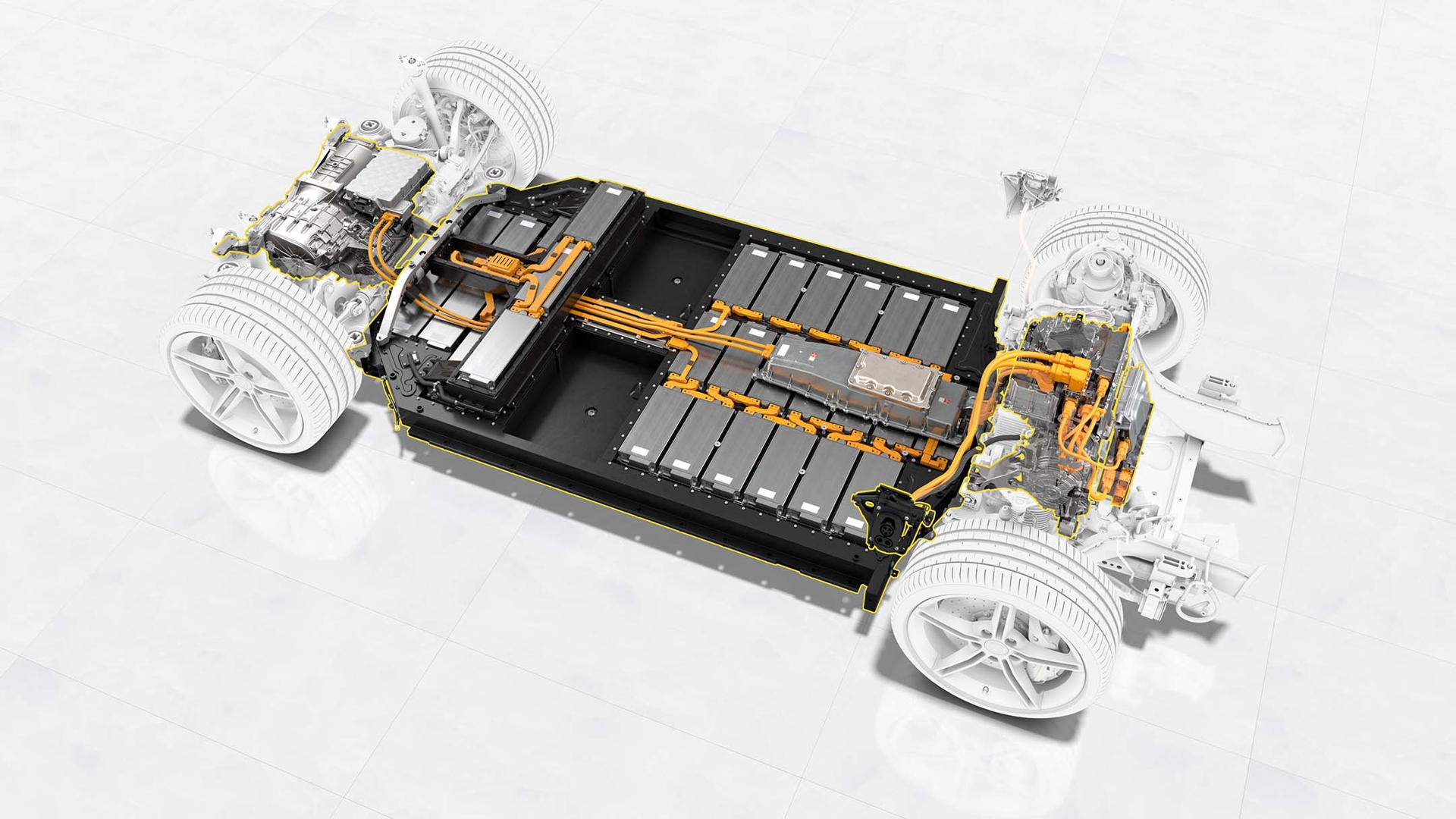
Max Charging Speed/Availability: Draw
Every version of the Porsche Taycan revealed so far can potentially charge faster than any Tesla Model S. We’re talking a maximum of 225 kW for the standard 79 kWh lithium-ion battery, or a blazing 270 kW when equipped with the larger 93 kWh Plus option, which matches the pricier Taycan Turbo models. The fastest Tesla Model S can charge on their latest V3 Supercharger is 200 kW (the Model 3 can charge at up to 250 kW). Advantage Porsche then, right?
Well, not so fast. The Taycan’s super quick charging speeds require special high-powered 800-volt Level 3 public chargers, of which there are two in Canada as of writing, with 30 more slated to come online by the time the Taycan 4S arrives in mid-2020 – in addition to the high-speed chargers that will be installed at Porsche dealerships across the country.
There are over 60 Tesla Superchargers across Canada at the moment, with an additional 33 currently under construction to form a cross-country network. Plus, most of the new ones will have the V3 architecture. While most EV owners will charge their vehicles at home for everyday use, the coverage and speed of charging infrastructure plays a huge role in longer trips – gaps and slower chargers can add hours to an itinerary.
So with different advantages to both, we’re calling this one a draw.
Horsepower/Acceleration: Advantage Tesla
Fairly simple measure here. Porsche reserves the top performance numbers for the Taycan Turbo models, not the “entry-level” Taycan 4S. The base Model S comes close to matching the 522 horsepower figure of the base 4S; however, the Model S Performance blows it and the 562 hp 4S Plus away with its estimated output of 762 horses.
That power output is reflected in the 0–100 km/h times: The Model S Long Range at 3.8 seconds is roughly equal to the 4.0 second figure achieved by both Taycan 4S models. But the Model S Performance can chop that acceleration time down to 2.6 seconds.
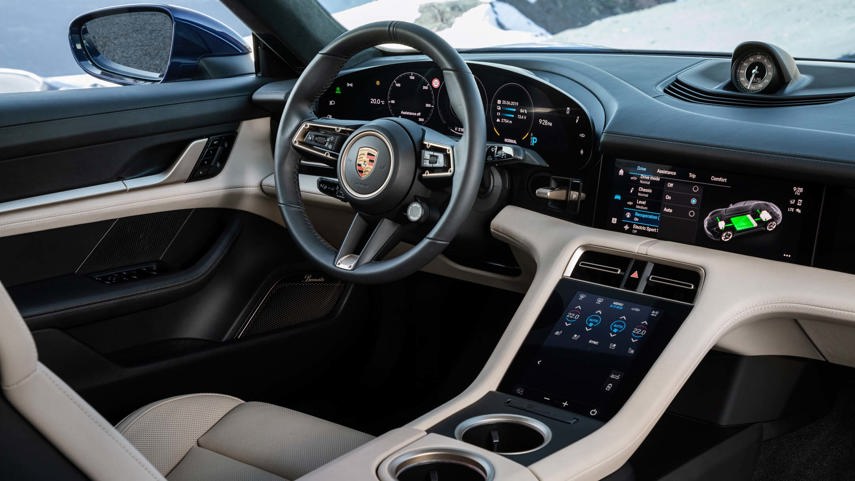
Drive/Handling: Advantage Porsche
All versions of both models offer all-wheel drive as standard for 2020. One could argue that the unique two-speed transmission on the rear axle of the Taycan 4S (and the Turbos) give it an advantage in acceleration, but the numbers (as seen above) are basically a wash – on paper, at least.
Out on the road, the Taycan Turbo we tested in September certainly offered more precise steering and flatter cornering than any Model S we’ve tried, and we expect the 4S will offer the same dynamic brilliance compared to the more comfort-oriented ride and handling of the Model S. We’ll need to drive the Taycan 4S to declare this definitively, but it’s a very safe bet that there will continue to be a huge advantage in the handling department for the Porsche Taycan.
Cabin and Cargo Space: Advantage Tesla
The Taycan seats four, the Model S five, and even with four people in each, rear-seat passengers will be much more comfortable in the taller Tesla, which is also easier to step into and out of all around. The Model S is only 13 mm longer than the Taycan, but it has a wheelbase that’s 59 mm longer than the all-electric Porsche, roughly the same width, and is 5.6 cm taller than the Taycan 4S – it’s simply a larger vehicle overall.
Looking at the pure numbers, it’s tough for Porsche to hang here – and is one of the few areas the Tesla is far and away superior. Both the front and rear trunks of the Tesla provide roughly double the space of their respective counterpart in the Porsche.
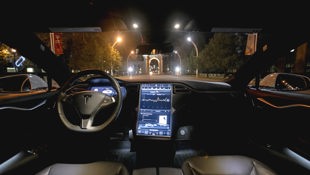
Curb Weight: Advantage Porsche
A win for Porsche, but much closer than I thought this would be until I dug into the numbers. In fact, the Taycan 4S with the larger optional battery weighs five kilos more than the base Model S, though the base Taycan comes in at a full 100 kg less than the heaviest Model S. So this one goes to Porsche, but was very close to a draw.
Value: Draw?
Now that they start much closer in price, the slightly pricier Taycan 4S provides a much better value proposition against the Model S than the $200K-plus Turbo models, though the Porsche could likely still end up being notably pricier after all options.
The Tesla has clear advantages over the 4S on acceleration, interior space, and cargo capacity, while the Porsche comes out ahead in handling and arguably in the looks department as well, being a brand-new design.
Of course, one of the Model S’ biggest boons isn’t part of the vehicle at all, but Tesla’s proprietary Supercharger network. But when it comes to ownership experience, there’s also the question of reliability: in Consumer Report’s 2019 Reliability Ranking, Porsche placed fourth out of 30 brands – Tesla came in at 23rd. While this ranking doesn’t apply to the Taycan and Model S specifically, it does speak to the general manufacturing quality of an automaker.
|
|
2020 Porsche Taycan 4S |
2020 Tesla Model S |
|
Price |
$119,400 ($126,900) |
$109,090 ($135,090) |
|
Range (km) |
WLPT: 407 (463) |
EPA: 600 (560) |
|
Max Charging Rate (kW) |
225 (270) |
200 |
|
Horsepower (hp) |
522 (562) |
518 (762 estimated) |
|
0–100 km/h (s) |
4.0 (4.0) |
3.8 (2.6) |
|
Drivetrain |
All-wheel drive |
All-wheel drive |
|
Seating Capacity |
4 |
5 |
|
Wheelbase (mm) |
2,900 |
2,959 |
|
Curb Weight (kg) |
2,140 (2,220) |
2,215 (2,241) |
|
Cargo Room (L) |
407 trunk, 81 frunk |
804 trunk, 229 frunk |
|
Availability |
Summer 2020 |
Now |
The Porsche Taycan feels like the one Tesla Model S competitor that can claim to truly challenge it in multiple areas. The new Taycan 4S may be less powerful than the top Model S, but takes a more aggressive path to its enthusiast consumers – so much so that it adds a caveat to many of Tesla’s objective wins.
Both cars have major appeal, and each caters to a different driver, and a different set of priorities. So what does it mean for drivers cross-shopping the Taycan against the Model S? The answer, of course, is that you’ll simply have to drive both of them and see for yourself.
